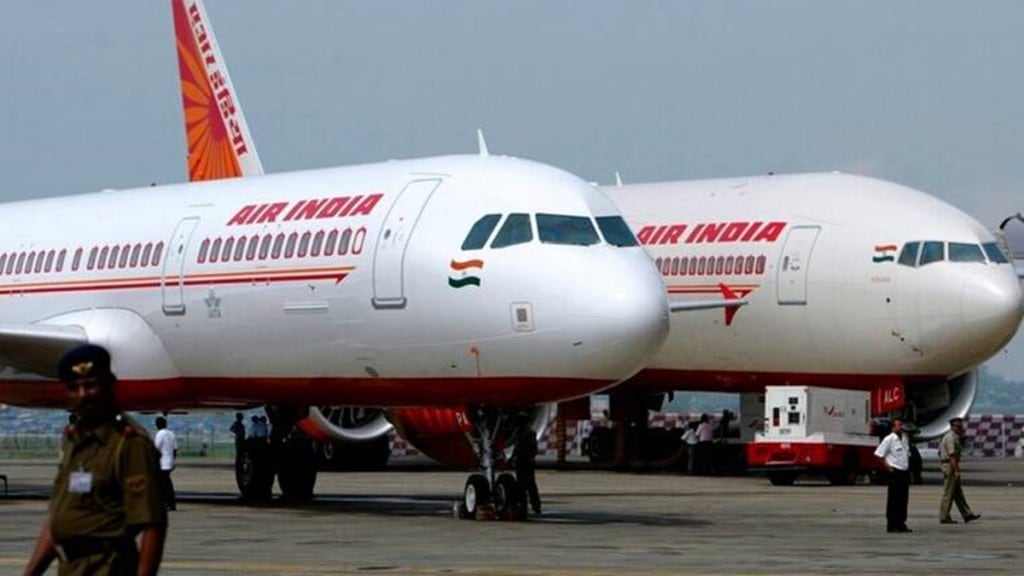With multiple incidents of unruly passengers on flights surfacing — at least five instances of inebriated men threatening women on different international flights have made headlines in recent times — the Director General of Civil Aviation (DGCA) has issued an advisory, asking restraining devices to be used on board for such passengers.
Three of such incidents have been reported on Air India flights, one on board a Gulf carrier and another one on a domestic IndiGo flight. In the IndiGo one, two men were allegedly found drinking on board and handed over to the police on arrival — alcohol consumption is banned on domestic flights. On AI102 from New York’s JFK airport to Delhi in late November, an allegedly drunk passenger relieved himself on an elderly lady. On AI 142 Paris-Delhi flight, one drunk passenger was caught smoking in the lavatory and remained unmindful of the crew’s instructions. Another allegedly relieved himself on a vacant seat and the blanket of a female passenger when she was not at her seat.
So, what is this restraining device and how is it used globally? Are Indian carriers the only ones to report such incidents, or it’s a problem felt across airlines globally?
Aviation safety consultant Mohan Ranganathan told FE that most airlines globally carry restrainers on board and use them for unruly passengers.
Also read: Air India incident: Delhi court denies bail to accused Shankar Mishra
Queries to IndiGo, Vistara and SpiceJet on whether restrainers are routinely carried on board and used remained unanswered till the time of going to the press.
Ranganathan explained that the restrainer is a “plastic arrester”, and not a handcuff. “It has to be attached to the armrest and is like a plastic clip and can be cut open when the passenger is released on landing”. But the airline crew need to be trained to use the restrainer properly, he added.
“The restrainer should only be used on one hand, since the second must remain free at all times for emergency situations. The crew should be trained to ascertain which arm is to be restrained — a right-hand passenger must have his/her right hand free for emergencies.”
Also read: DGCA issues notice to Air India over second case of unruly passengers
Apart from restraining an unruly passenger, the DGCA norms also lay down the responsibilities of cabin crew and captain of flights with unruly passengers. These include handing over the passenger to the authorities on landing; reporting the incident to the DGCA within 12 hours and setting up an internal committee to determine the duration of ban on flying for the unruly passenger.
In the Air India case where the passenger relieved himself on an elderly woman co-passenger, some aviation experts pointed towards the continued “sarkari” mindset of the airline’s employees on the lax response by the crew.
Mark Martin, CEO, Martin Consulting, said even one drink can be too much. “The cabin crew has no way of knowing if the passenger is in an inebriated state before boarding…the issue behind the present crisis is the crew’s inability to handle the situation because clearly there still is the ‘I don’t care’ attitude.”
Ranganathan further said instead of quoting an internal memo about not upgrading passengers, the AI crew should have upgraded the aggrieved passenger to First Class if no Business Class seats were available.
Globally, aviation regulators have stringent penalties for unruly passengers. The Federal Aviation Administration (FAA), the US aviation regulator, has listed 2,359 reports of unruly passengers in 2022 till December 15, with 823 investigations initiated. This is the second-highest number of investigations in at least a decade. In advertisements on its website, the FAA says it can impose a $10,000 fine for not listening to or interfering with airline crew and a $30,000 fine for assaulting a crew member or a fellow passenger.
The UK’s aviation regulator, the Civil Aviation Authority, says acts of drunkenness on an aircraft face a maximum fine of £5,000 and two years in prison. The prison sentence for endangering the safety of an aircraft is up to five years. Disruptive passengers may also be asked to reimburse the airline with the cost of the diversion. Diversion costs typically range from £10,000-£80,000, depending on the size of the aircraft and where it diverts to.


